At the sound of his mother's distant voice, a 2-year-old named Mau'rese suddenly dropped his toys, squealed "Mommy!" and darted across the living room of his family's apartment in north Minneapolis.
"I love you Mau'rese-ee-oh, my baby!" said the muffled voice over the phone.
The voice belonged to Makeysa Morgan, 20, who has spent virtually all of her son's life locked up at a women's prison in Shakopee for violating the conditions of her juvenile probation. Morgan wasn't there to see Mau'rese take his first steps, utter his first words or attend his first day of preschool. Their interactions are limited to 10-minute evening phone calls.
"I just want to embrace my child and let him know that he's loved," Morgan said. "That's all I want out of life."
Each year, Minnesota sends scores of young people like Morgan to prison for conduct that normally would not warrant such punishment. Many committed offenses when they were as young as 14 and 15 years old. Yet they are locked up in prisons — surrounded by much older adults — because they violated the terms of a youth probation program that has gone largely unexamined for three decades.
Extended jurisdiction juvenile, or EJJ, was once heralded as an innovative alternative to incarceration for adolescents who commit violent crimes. Instead, an alarming percentage of them end up serving prison sentences — the very outcome the program was created to prevent.
"Everything that could go wrong did go wrong" with extended probation, said Barry Feld, a retired law professor and early architect of EJJ, who now disavows the program as ineffective and unduly harsh. He is among a growing number of public officials and legal scholars who wish to see it dismantled.
About half of the 1,335 youths in Minnesota who have been placed on extended probation since 2011 have had their probation revoked and criminal sentences imposed, according to an analysis of state court data. Some end up in prison because they reoffend, but many kids are sent to prison for things like not completing court-mandated therapy or failing a drug test.
In Hennepin County, these technical probation violations accounted for nearly 60% of youth who fail extended probation and end up in the adult criminal system, according to a sampling of 2020 juvenile cases.
Black youth are significantly more likely to be placed on extended probation — and be sentenced as adults for failing the program — than their white peers. Statewide, youth of color consistently make up more than 70% of kids placed on extended probation — and nearly 80% of those who fail the program and receive adult sentences, according to state court data.
Children placed on extended probation stay under the close supervision of a probation officer until their 21st birthday — or as long as seven years. That's even longer than the statewide maximum probation sentence for adults, which is limited to five years for most felony convictions. Some probation officers and public defenders say it's unreasonable to expect young people to steer clear of trouble for such extended periods.
"Some people call EJJ a 'back door' to the adult criminal system, but it's very clear that it's a front door," said Sarah Davis, executive director of the Legal Rights Center in Minneapolis. "It acts like a funnel directly into the adult system."
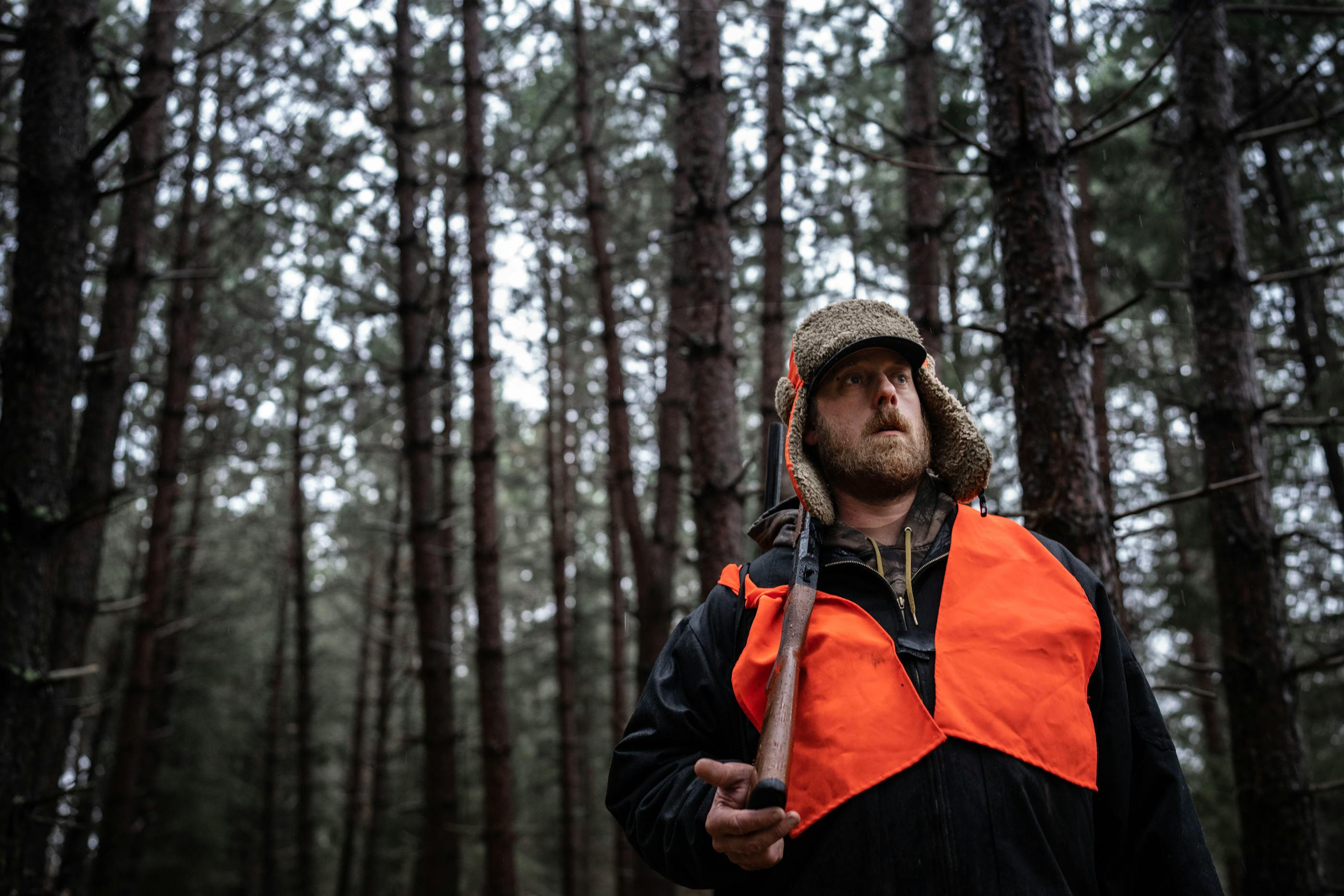
'No teenager is cut out for prison'
Matthew Doughty has spent 25 years trying to forget his painful experience with Minnesota's extended youth probation system.
The 41-year-old volunteer firefighter grew up in an abusive home and spent much of his adolescence bouncing from foster homes to dormlike group homes. By age 16, Doughty was skipping classes, taking drugs and hanging out at his 13-year-old girlfriend's home. Eventually, the girl's parents notified police and Doughty was charged with criminal sexual conduct for repeatedly having sex with a minor. If tried as an adult, he faced a prison sentence of up to 18 months.
When prosecutors offered him extended probation in lieu of prison, Doughty said he leaped at the opportunity without knowing the stakes. At the time, he did not understand that a technical violation of his probation could trigger an adult sentence.
"All I knew at 16 is that I had two choices: Either definitely going to prison, or possibly going to prison," he said. "It was the first time I was in real trouble with the law, and I would have done anything to avoid being locked up."
As part of his probation, Doughty was expected to successfully complete therapy at the Hennepin County Home School, a now-closed facility that once housed up to 140 kids. But he objected to the treatment methods and failed the program. A judge ultimately revoked his probation and imposed the 18-month prison sentence. He was 20 when he walked out of the Hennepin County juvenile courtroom in handcuffs and was taken directly to prison in St. Cloud.
Doughty described the next 18 months as "the most terrifying" of his life. As a teenager charged with a sex crime, he became a target of violence from much older inmates. Within weeks after his arrival, Doughty said he was badly beaten in the prison bathroom by four men. Another inmate cracked his skull with a sock filled with pool balls.
"I had to be hard and look like none of it affected me, but I cried for nights on end," he said. "No teenager is cut out for prison."
Today, Doughty owns 10 acres of birch forest along the banks of the Willow River in northern Minnesota, where his wife and three daughters enjoy fishing and hunting. He trains therapy dogs and works as a volunteer firefighter in the nearby town of Remer, Minn. He launched a nonprofit to help first responders deal with trauma, and gives regular talks on the subject.
Yet Doughty said he still suffers painful flashbacks from his time in prison. The sharp sound of doors slamming or the creaking of a metal bed is often enough to trigger his anxiety. He gets nervous in crowds and can't resist looking over his shoulder — a habit he acquired in prison.
"Prison screwed me up mentally and will haunt me to my grave," he said. "The reality is, you can explain a complicated program like [extended jurisdiction juvenile] to a 16-year-old, but they're not going to understand the stakes."
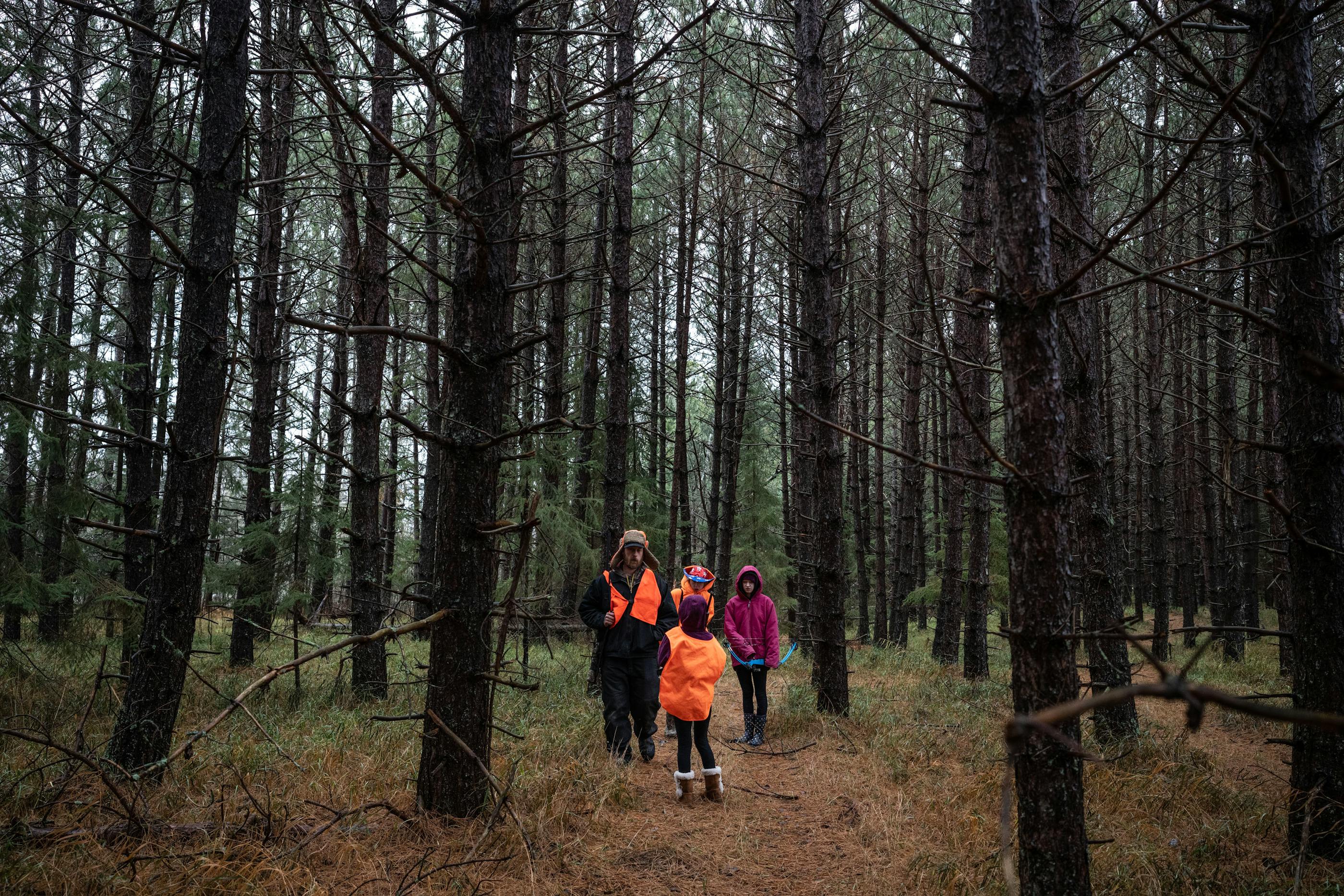
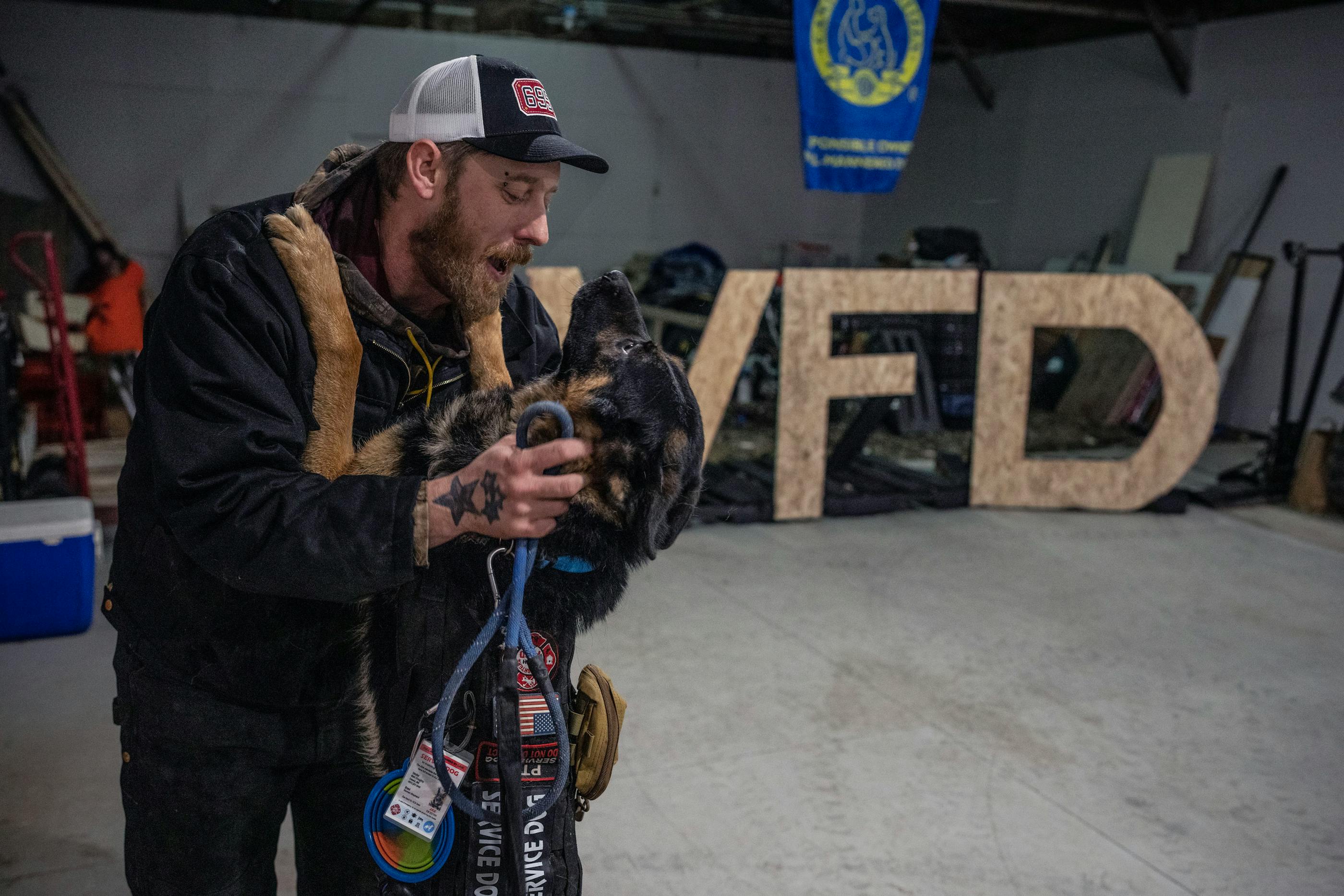

An approach that caught on
Three decades ago, Minnesota lawmakers were searching for ways to counter a surge in youth crime. Growing numbers of repeat juvenile offenders were being tried as adults and being sentenced to prison, raising fears they would become lifetime criminals. In 1992, a state task force devised a novel carrot-and-stick approach to holding kids accountable — one that caught on in more than a dozen states across the country.
Called "blended sentencing," Minnesota's experiment combined elements of both the juvenile and adult criminal systems. Youths convicted of a felony between the ages of 14 and 17 would receive an adult criminal sentence, but the sentence would be "stayed," or suspended, while the teen completed the terms of juvenile probation. To alleviate public safety concerns, probation under the new program would last much longer and involve more rigorous oversight.
Youth who complied with the terms of the extended probation would be released from supervision at age 21 — and avoid the stain of a criminal record that would follow them into adulthood. But if they failed to comply with the terms of their probation, a judge could immediately impose the adult sentence.
Former Hennepin County Judge Philip Bush, a member of the 1992 task force, said extended probation was meant to be a "middle ground approach" that gave youth more time to access rehabilitative services and change their behavior. "We were trying to address the very real problem that juvenile courts didn't have sufficient tools to deal with violent and chronic young offenders," said Bush, who remains a supporter of the program. "By hanging an adult sentence over their heads, we gave them a huge incentive to be law-abiding."
But soon after the program launched, evidence began to mount that EJJ was not meeting its core objective of rehabilitating kids and keeping them out of prison.
In an expansive 2001 study, researchers found that judges and prosecutors across Minnesota had widened the net of the program beyond its original intent, ensnaring teens who wouldn't normally qualify for adult criminal sentences. Many had committed minor property crimes and were not chronic or violent offenders. More than a third of these children were failing the program, and 76% were failing for technical probation violations rather than new crimes, researchers found at the time.
"Extended jurisdiction juvenile was designed to give kids one last chance at rehabilitation," said Feld, a co-author of the 2001 study. "Instead, it became a back door to prison. It swept up large numbers of youth into the adult correctional system who did not deserve to be there."
Local prosecutors were given too much discretion to determine who qualified, and the strict terms of the program often "set kids up to fail," Feld said. Youth on extended probation had to attend weekly meetings with their probation officers and undergo regular drug and alcohol tests for up to seven years. In many counties, children who committed even minor violations such as smoking weed or skipping school were taken off probation and sentenced as adults.
Statewide, more than 740 youths placed on the program have had their probation revoked — and adult criminal sentences imposed — since 2011, court records show. The state court system does not track how many of these children end up in prison. However, Hennepin County District Court recently found that nearly half of the youths who had their probation revoked over the past decade were sentenced to prison. Of those, 91% were youth of color, and 5% were white, the county found.
Those stark racial disparities are further evidence that extended probation is flawed and should be abolished, according to one of Hennepin County's top juvenile corrections officers. "You can't say there's a reason why this is happening other than, in my opinion, race," said Jerald Moore, who serves as the county's juvenile probation division manager. "So I would advocate for us to disband EJJ."
Fulfilling the terms of extended probation can be so burdensome that some young people ask the court to impose the adult sentence instead. In Hennepin County, records show that in 2020 nearly one quarter of teenagers placed on the program would rather serve time for a shorter period than remain under intense surveillance until their 21st birthday.
Sen. Bobby Joe Champion, incoming DFL president of the state Senate and a longtime juvenile defense attorney, said youth make those decisions — sometimes against the advice of legal counsel — without taking into account the long-term impact of having a criminal record.
"They may not understand the gravity of it until later. And then they sometimes have buyer's remorse," said Champion, who thinks lawmakers should take a "hard look" at whether extended probation lasts too long.
Others have criticized extended probation as too lenient. In emotional court hearings, some family members who have lost their loved ones to shootings, high-speed chases and other deadly crimes have pleaded with judges to try these adolescents as adults. In Hennepin County, approximately 30% to 50% of youths placed on extended jurisdiction reoffend within two years — evidence, critics say, that the program is failing to protect the public.
Department of Corrections Commissioner Paul Schnell said the high failure rate of extended probation points to deeper problems with the youth justice system, including the need for more mental health services for kids placed on probation. He cautioned that any move to abolish extended probation would probably result in more adolescents being tried as adults and ending up in prison — an outcome he described as "tragic."
"If we unwind EJJ, but then we don't create the kinds of supports necessary for these kids, then what are we doing?" Schnell said. "We know that the right interventions … actually make a difference."
In 2018, Ray Moss took over as coordinator of an ambitious, long-term initiative in Ramsey County designed to keep young offenders out of detention.
Almost immediately, Moss was alarmed by the consistently high failure rate of extended probation, and reports that participants were being sent to prison for technical probation violations rather than for new crimes. Moss, a former probation officer, said he was also surprised to discover that children were never released early from the program in Ramsey County for good behavior — even though the law allows for early discharges.
"When I found out that EJJ had a 50 percent failure rate and never let a kid out early — not even one — I was furious," said Moss. "It was clear that no one had looked at this program in more than 30 years and recognized it for the travesty that it is."
Moss said he spent three years trying to persuade Ramsey County officials to establish minimum guidelines for the early release of youths on extended probation. Frustrated by the lack of progress, he resigned from his county post last fall. He now runs a nonprofit dedicated to helping teens rejoin society after detention.
In Hennepin County, which sees the largest share of juvenile cases in Minnesota, incoming County Attorney Mary Moriarty said she will push the Legislature to dismantle EJJ and adopt a different framework for addressing youth violence. That blended sentencing model, however well-intentioned, ultimately failed to keep kids out of prison or prevent them from reoffending upon release, she said.
"When you have half of kids not succeeding in a particular program or service, that's not working," said Moriarty, a former chief public defender who was elected as Hennepin's top prosecutor last month on the promise of criminal justice reform.
In the meantime, Moriarty plans to direct her office to limit the number of petitions seeking adult certification or EJJ, with the intent of keeping more teens within the juvenile system.
"I understand my obligation to public safety," she said. "I also understand sending youth to prison is not going to keep us safer, or put them in better shape."
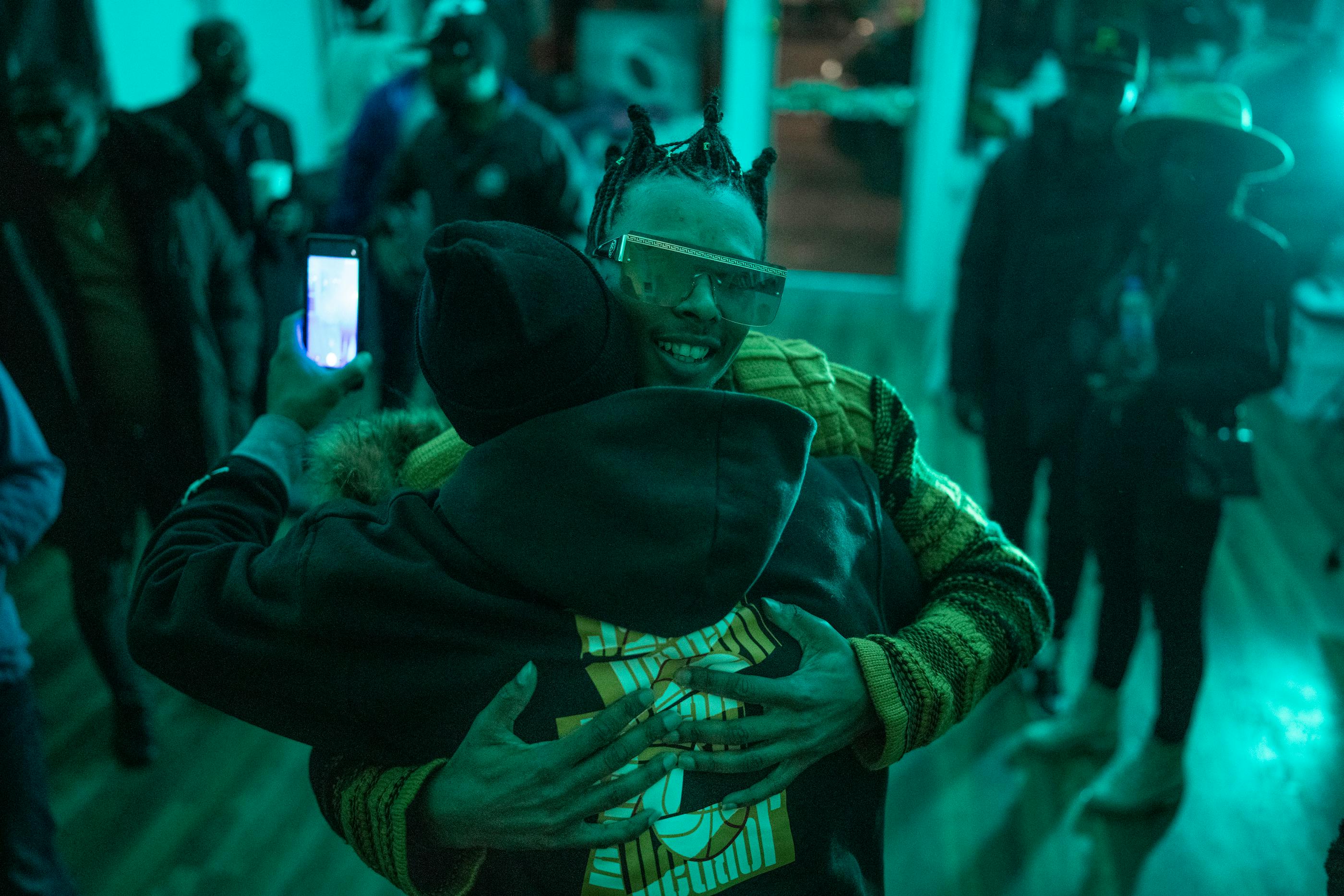
Continuous monitoring
Lewis McCaleb, 25, said he considers himself "one of the lucky 50 percent" who survived extended probation without ending up in prison.
The musician, who goes by the artist name Lewiee Blaze, was placed in the program at age 16 after he was convicted of beating and robbing a man near a south Minneapolis light-rail station with a group of accomplices in 2014 .
McCaleb estimates he had more than 200 one-on-one meetings with probation officers over the five years he spent on extended probation. Not once, he said, did his first few probation officers ask about his life at home and what help he needed to stay out of trouble. Had they asked, McCaleb said he would have told the officers about how his single mother was a victim of domestic violence and struggled with mental illness and drug abuse, and about how he and his three younger brothers would sometimes go hungry.
"I began to take matters into my own hands and make some bad decisions," he said, describing how, by age 15, he started running in the streets and selling drugs to help provide for the family. "I couldn't just be a kid anymore."
The law finally caught up with McCaleb after surveillance footage from the train platform captured an image of his high school letter jacket. Police marched him out of his high school science class in handcuffs. A public defender later told McCaleb that he faced five years in prison if a judge certified him as an adult. But since this was his first offense, he qualified for EJJ. The legal concept confused him, he said, yet any amount of time on probation seemed better than prison.
"I'm the man of the house, so me going away for five years was not an option," recalled McCaleb, who believes those family obligations motivated him to stay out of trouble. But after completing four months of house arrest, the idea of five more years of continuous monitoring felt excessive.
McCaleb made it to his 21st birthday without violating the conditions of his probation. He now helps lead group therapy sessions with adolescents who have been convicted of violent crimes and are being held at juvenile correctional facilities in Ramsey County, Moorhead and Red Wing. Many of the kids he is mentoring are on extended probation like he was.
A decision that backfired
Makeysa Morgan's odyssey with extended probation began on a March evening in 2020, when police arrested her for being an accomplice to an armed robbery.
Morgan, who was 17 at the time, lured a friend to a house in north Minneapolis where he was jumped by four boys wielding guns and an axe. After taking his vehicle, they led police on a high-speed chase that ended when they crashed into a wall. Morgan, who was in the back seat of the crushed vehicle, was immediately arrested.
Hennepin County prosecutors gave the teenager a choice: Be certified as an adult and face a 58-month prison sentence for aggravated robbery, or be placed on extended probation for the next four years. Morgan, who had given birth a few months earlier, said she was prepared to accept "just about any deal" that would keep her at home with her newborn son.
But Morgan's decision to accept extended probation would backfire — and ultimately land her in the prison cell where she remains to this day.
In interviews from Shakopee prison, the young mother said she was never told of what would happen if she violated the conditions of her probation. One of these conditions was that she complete a mental health treatment program at a now-shuttered facility in Duluth. But roughly two months into her treatment, Morgan was expelled for behavioral problems — violating a condition of her probation. The result was swift and harsh: Within days, a judge issued a warrant for her arrest and imposed a nearly five-year prison sentence on a 17-year-old girl.
"I had no idea they could send me here without me committing a new crime," Morgan said. "It was like a dagger in my heart."
For the past two years, Morgan has turned to her mother and father to care for her son, who turned 3 earlier this month. She's missed most of his major milestones, and had to listen on the phone while family members sang "happy birthday" to him each year.
"Tell me, why is my daughter behind bars?" asked her father, Patrick Ester, as he walked Mau'rese to a playground near his home. "How do you send a young mother to prison when she hasn't even caught a new [criminal] charge? It's inhumane."
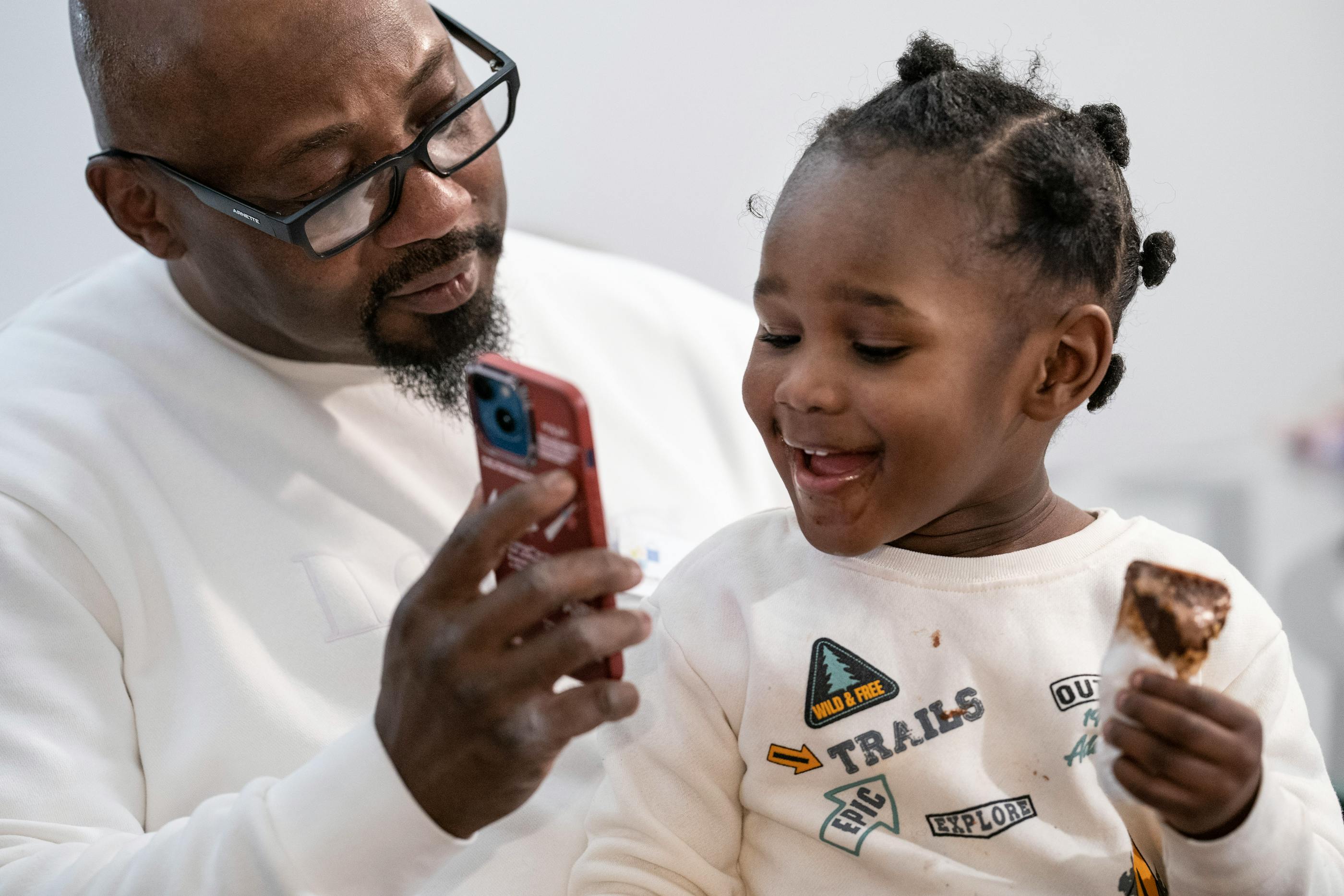
About this series
Juvenile Injustice is a Star Tribune special report examining how Minnesota's juvenile justice system is failing young people, families and victims of violence.
Part 1: Broken promises, shattered lives
The consequences can be
deadly when the juvenile
system fails to intervene in the lives of Minnesota's most troubled kids.
Part 2: Justice 'by ZIP code, not fairness'
Minnesota has no
uniform standards for who can
join diversion programs or what they offer.
Part 3: Nowhere to go for most troubled youth
As youth detention
centers close, Minnesota runs out of places to
rehabilitate kids who commit serious crimes.
Part 4: 'Back door to prison' steals precious time
Minor offenses often funnel Minnesota youth from extended probation into adult lockup.
Part 5: Laying down the law for youths
Minnesota's juvenile justice system is broken. Colorado shows how it could be better.
How we reported these stories
Star Tribune journalists spent more than a year examining hundreds of juvenile court cases dating back to 2018 that involved violent crimes, including shootings, aggravated robberies and homicides. Many of the young people charged in those incidents had committed previous offenses, leading us to ask whether Minnesota's juvenile justice system was fulfilling its core promise of rehabilitating youth while protecting public safety.
Our review of court records was limited in scope because most juvenile case records are confidential. In Minnesota, juvenile crime records are only accessible to the public if the offense is a felony and the youth was at least 16. In cases where a court document was not accessible, we relied on interviews and documents obtained from relatives, victims and public-records requests from local law enforcement agencies.
Gathering statewide data about the effectiveness of rehabilitation efforts is difficult because the youth justice system in Minnesota is highly fragmented. The programs and the process of redirecting youth from formal judicial processing (known as "diversion") vary widely between counties. To better understand how these programs work, we created a survey that was sent to all 87 counties. We received responses from programs in more than half of those counties, representing 85% of the state's juvenile population.
Many young people do not re-offend. The juvenile courts shield their identities because a public record of their crime could be a barrier to attending college, obtaining a job or renting an apartment. Through the course of this series, we identify minors only by a first name — and only when parents have specifically consented. Those publicly identified after their deaths are the lone exception to this rule.
Series credits
Reporting: Liz Sawyer, Chris Serres, MaryJo Webster and Maya Miller
Photography and video: Jerry Holt, Mark Vancleave, Cheryl Diaz Meyer, Christine Nguyen and Deb Pastner
Design and development: Bryan Brussee, Josh Penrod, Jamie Hutt, Josh Jones and Dave Braunger
Graphics: C.J. Sinner, Eddie Thomas, MaryJo Webster and Josh Jones
Editing: Eric Wieffering and Abby Simons
Copy editing: Catherine Preus and Amy Kuebelbeck
Audience engagement: Anna Ta, Nancy Yang, Ash Miller and Tom Horgen
Share your story
The Star Tribune is continuing to report on Minnesota's juvenile justice system. We would like to hear from judges, prosecutors, young people who have been involved in the juvenile justice system and their parents, and victims of crimes. Our reporters will not share your information without your explicit permission. You can reach Liz Sawyer at 612-673-4648 or at liz.sawyer@startribune.com, or via the encrypted messaging app Signal at 612-916-1443. Chris Serres is at 612-673-4308 or chris.serres@startribune.com, or on Signal at 612-910-7134.

